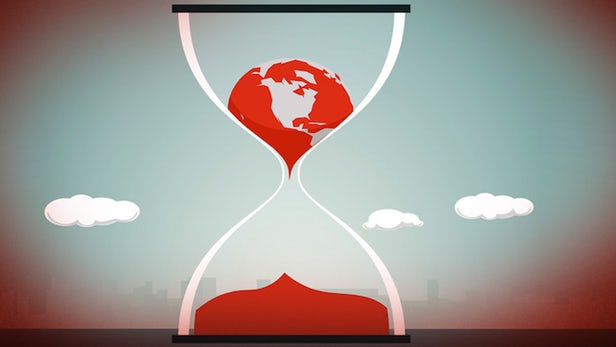A sixth mass extinction event could reach the tipping point by 2100

An MIT professor has studied the worst mass extinction events in Earth's history, and calculated that we may be well on the way to triggering a sixth by the end of the century(Credit: MIT)
In the history of life on Earth, there have been five mass extinction events, with the most extreme example, the Permian extinction, wiping out some 95 percent of all marine life. Now, an MIT professor has analyzed the changes that took place in the carbon cycle leading up to these five main events – as well as dozens of smaller ones – and found that the end of this century could mark the tipping point for a sixth mass extinction event.
Each of the five major extinction events can effectively be traced back to one little troublemaker: carbon. As respiring organisms inhale oxygen and exhale carbon dioxide, and photosynthesizing plants do the opposite, the Earth naturally cycles carbon through the atmosphere and ocean. But disruptions to that process can throw the whole planet's climate out of whack, either by adding too much carbon at once or by speeding up the rate at which it's being added.
While carbon is the common culprit, different initial triggers may have set the ball rolling each time. The Permian extinction is thought to have been caused by huge magma pulses that belched carbon dioxide into the atmosphere, while the dinosaur-killing K-T event was thanks to an asteroid impact triggering planet-wide wild fires and volcanic eruptions.
Daniel Rothman, a geophysics professor at MIT, wanted to investigate potential warning signs of disruptions to the carbon cycle, and find thresholds that could be used to predict whether we might be heading into a sixth mass extinction event. The trouble was, historical carbon anomalies can take thousands of years to play out, while the clear spike we're seeing today can only be traced back a hundred years or so.
"How can you really compare these great events in the geologic past, which occur over such vast timescales, to what's going on today, which is centuries at the longest?" says Rothman. "So I sat down one summer day and tried to think about how one might go about this systematically."
He developed a mathematical formula that takes into account the critical rate and magnitude of changes to the carbon cycle, and related that to the timescale that the change is playing out over. Rothman found that there are two different thresholds that, if crossed, would trigger a mass extinction event.
For long-term changes, the threshold is one of speed: if carbon is added too quickly, global ecosystems don't have time to adapt. Meanwhile, for changes over shorter timescales it's all about magnitude: adding too much carbon will upset the delicate balance.
Rothman then applied those thresholds to historical data, to see if his model accurately predicted mass extinctions. He identified 31 times there were major changes in the carbon cycle over the last 542 million years, including the five mass extinctions, and studied the rate and magnitude of the change for each of these events.
In doing so, he discovered a common threshold that reliably predicted a mass extinction. Although they still involved huge disruptions to the carbon cycle, most of the 31 events stayed below that line, avoiding global catastrophe. But that threshold was crossed four times, corresponding to four of the five worst mass extinctions.
By looking at that critical rate, as well as the 10,000-year timescale it takes for the marine carbon cycle to correct itself after a major disruption, Rothman calculated how much carbon it would take today to tip us over the threshold. According to his calculations, if an extra 310 gigatons of carbon is added – say, through human action – it would tip the carbon cycle into "unknown territory" that may lead to mass extinction.
"This is not saying that disaster occurs the next day," says Rothman. "It's saying that, if left unchecked, the carbon cycle would move into a realm which would be no longer stable, and would behave in a way that would be difficult to predict. In the geologic past, this type of behavior is associated with mass extinction."
If 310 gigatons sounds like a lot, we have some bad news: humans are full steam ahead towards smashing that figure by the end of the century. According to the latest report from the Intergovernmental Panel on Climate Change, the best-case scenario for how much carbon humans will add to the oceans by the year 2100 is about 300 gigatons. In the worst case scenario, that number could surpass 500 gigatons.
Rothman isn't the only scientist to predict such a worldwide calamity in the next century. The World Wildlife Fund predicts that as many as two thirds of Earth's species could be wiped out in the next few years, while a Stanford study has found that currently, extinction rates of vertebrates are up to 114 times greater than the baseline.
The human impact on the Earth over the last few centuries is apparently so extreme that some groups are even calling for a new geological epoch, the Anthropocene, to be officially declared.
"There should be ways of pulling back," says Rothman. "But this work points out reasons why we need to be careful, and it gives more reasons for studying the past to inform the present."
The research was published in the journal Science Advances.
